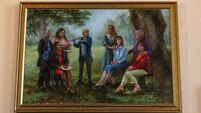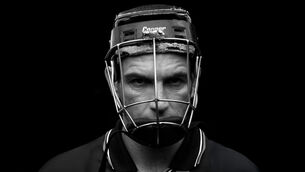Racism in Ireland - We must do more to end fear and hate
In Ventersdorp, in South Africa’s North West Province, white supremacist Eugene Terre’Blanche was buried as armed men wearing military-style camouflage clothing mixed with young girls in their Sunday best.
Both lives, one that stretched well beyond the allotted three score and ten, the other just beginning, were destroyed by racism.
Toyosi Shitta-bey was killed not for who he was or anything he had done but because of what some deranged person imagined he was. Eugene Terre’Blanche spent his long life hating the majority of his countrymen and women because of what he imagined they were rather than who they are.
Racism is one of our great human failings, it’s a visceral insecurity carried from the darkest caves. It destroys societies and can only survive if ignorance, willful or otherwise, prevails. Too often, as the divided history of this island shows, it is fuelled by religion.
Maybe we have been too complacent, turning a blind eye and hoping, if not imagining, everything would, in time, work itself out.
This complacency is occasionally challenged just as it was two years ago when two Polish men — Pavel Kalite, 29, and Marius Szwajkos, 27, — were stabbed to death by a gang of teenagers using screwdrivers in a Dublin suburb. Their deaths were followed by short-term outrage but maybe not too much more.
Our complacency may be reflected too in the unease expressed by Imam Shehu Adeniji at the funeral of Toyosi Shitta-bey, when he referred to the protest march planned for Dublin today when he said: “Demonstration is uncalled for. We do not approve of it. It is creating social unrest ...”
We all know too, though we may not think to much about it, that even today the all-white complexion of far too many Irish businesses is not changed until the cleaners arrive. Certainly this may make many of us uncomfortable but being uncomfortable is not enough, something far more profound and proactive is needed.
Though this is not yet an integrated society — that may take a generation or two, as Irish emigrants will know — neither is it a racist society.
We may stand accused to not doing enough to facilitate easy integration or not doing enough to challenge the low-level, possibly unintended, racism we could all see if we opened our eyes. Equally, we can stand accused of not doing enough to confront the abuses of our asylum laws.
What we do know is that we all have to work and prepare for a different kind of society. Maybe even one where division of any kind is not tolerated in schools, even for religious training. That kind of change will challenge the majority tradition but those are the steps we may have to take if we are to do all we can to protect the Toyosi Shitta-beys, the Pavel Kalites and the Marius Szwajkos, and even the Eugene Terre’Blanches, of the future. They are the steps we must consider if we are to break the cycle of hate becoming fear, then becoming hate and, inevitably, fear and death again.














![Johnny_Stephens_Photography-02-425A6831-Edit[1].jpg Restaurant review: The Ivy Asia is an assault on all five senses — I hated it](/cms_media/module_img/9752/4876311_6_teasersmall_Johnny_Stephens_Photography-02-425A6831-Edit_5b1_5d.jpg)
